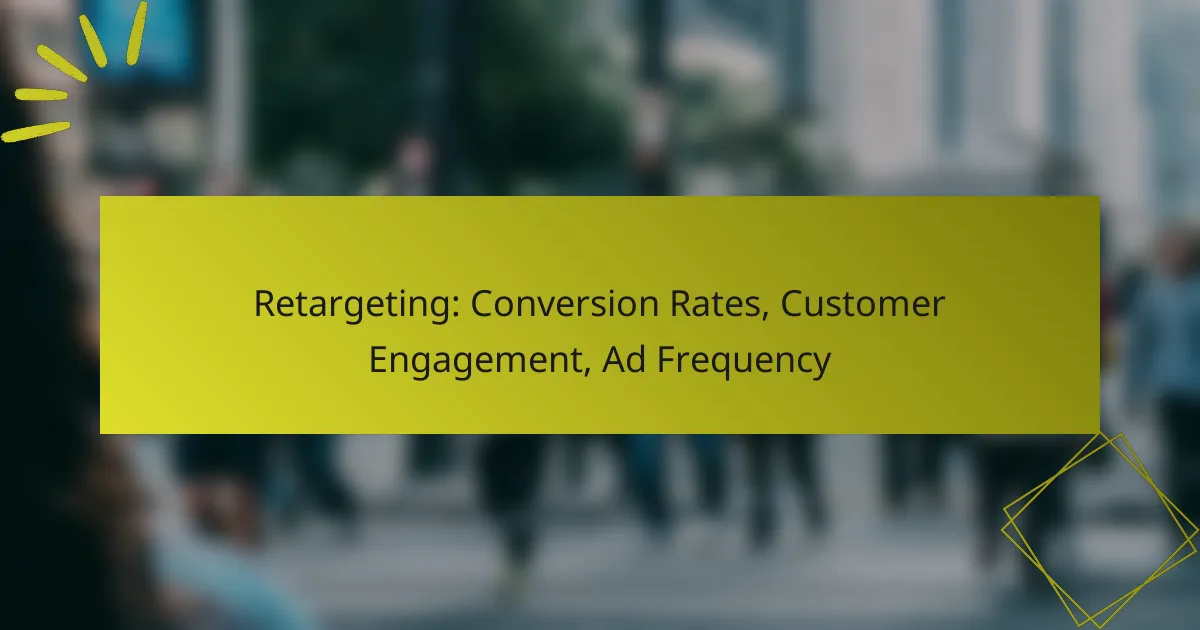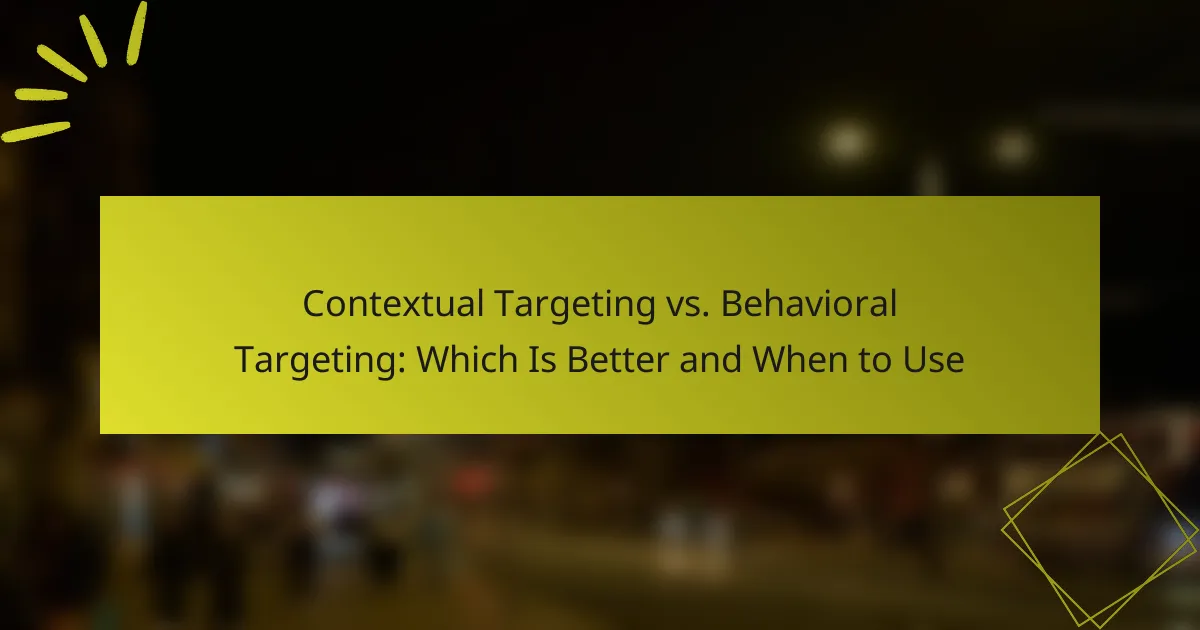Lookalike Audiences are a powerful tool for enhancing targeting efficiency by connecting advertisers with new customers who mirror the characteristics of their existing audience. By leveraging key similarity metrics such as demographics, behaviors, and purchase history, marketers can optimize their ad spend and significantly boost campaign performance, ultimately increasing conversion rates.

How do Lookalike Audiences improve targeting efficiency?
Lookalike Audiences enhance targeting efficiency by identifying and reaching new customers who share similar characteristics with your existing audience. This method allows advertisers to optimize their ad spend by focusing on individuals more likely to convert, thus improving overall campaign performance.
Enhanced audience segmentation
Enhanced audience segmentation occurs when marketers create Lookalike Audiences based on specific traits of their best customers. By analyzing demographics, interests, and behaviors, businesses can identify segments that are more likely to engage with their products or services. For example, a clothing retailer might target individuals who resemble their top buyers in age and shopping habits.
Using tools provided by advertising platforms, such as Facebook or Google Ads, businesses can easily generate these segments. This targeted approach helps in crafting personalized messages that resonate with potential customers, leading to more effective campaigns.
Increased ad relevance
Increased ad relevance is achieved when ads are shown to users who are more likely to be interested in the offerings. Lookalike Audiences ensure that marketing messages reach individuals who have similar preferences to existing customers, thus increasing the chances of engagement. For instance, if a tech company has a loyal customer base interested in gaming, targeting similar users can lead to higher click-through rates.
By tailoring ad content to the interests of these audiences, businesses can create more compelling advertisements. This relevance not only boosts engagement but also enhances brand perception among potential customers.
Higher conversion rates
Higher conversion rates are a significant benefit of using Lookalike Audiences, as these groups are more likely to take desired actions, such as making a purchase. Since these audiences share traits with existing customers, they are often more receptive to the marketing messages presented to them. Businesses can expect conversion rates to improve by focusing on these targeted segments.
To maximize conversion potential, it’s essential to continuously analyze performance metrics and adjust targeting strategies accordingly. Regularly updating audience definitions based on new customer data can help maintain high engagement and conversion levels over time.

What are the key similarity metrics for Lookalike Audiences?
Key similarity metrics for Lookalike Audiences include demographic similarities, behavioral patterns, and purchase history. These metrics help marketers identify and target new customers who resemble their existing audience, enhancing targeting efficiency and campaign performance.
Demographic similarities
Demographic similarities focus on characteristics such as age, gender, location, and education level. By analyzing these factors, businesses can create Lookalike Audiences that mirror their best customers, ensuring that marketing efforts reach individuals likely to engage with their brand.
For instance, if a company’s top customers are predominantly women aged 25-34 in urban areas, the Lookalike Audience will be tailored to reflect these demographics. This targeted approach increases the likelihood of conversion and customer retention.
Behavioral patterns
Behavioral patterns encompass online activities, interests, and engagement levels. Understanding how existing customers interact with a brand allows marketers to find new audiences with similar behaviors, which can lead to higher engagement rates.
For example, if current customers frequently engage with content related to fitness and wellness, a Lookalike Audience can be built around users who display similar online behaviors. This strategy helps in crafting relevant marketing messages that resonate with potential customers.
Purchase history
Purchase history examines the buying habits and preferences of existing customers. By analyzing what products or services are most popular among current customers, businesses can identify new prospects who are likely to make similar purchases.
For instance, if a retailer finds that a significant portion of their sales comes from eco-friendly products, they can create a Lookalike Audience based on users who have previously shown interest in sustainable goods. This targeted approach can significantly boost sales and customer loyalty.

How can Lookalike Audiences boost performance in display advertising?
Lookalike Audiences can significantly enhance performance in display advertising by targeting users who resemble your existing customers. This method increases the likelihood of conversions by reaching individuals who share similar behaviors and interests, thus optimizing marketing efforts.
Improved ROI
Utilizing Lookalike Audiences often leads to improved return on investment (ROI) for advertising campaigns. By focusing on users who are more likely to convert, businesses can allocate their budgets more effectively, resulting in higher sales relative to advertising costs.
For instance, companies may see ROI improvements ranging from 20% to 50% when targeting lookalikes compared to broader audience segments. This targeted approach minimizes wasted ad spend on users less likely to engage.
Optimized ad spend
Lookalike Audiences help optimize ad spend by ensuring that marketing dollars are directed toward high-potential prospects. By analyzing existing customer data, advertisers can create profiles of ideal customers and target similar users, reducing the cost per acquisition.
For example, a business might find that targeting lookalikes results in a lower cost per click (CPC) compared to general audience targeting. This efficiency allows for more budget allocation towards high-performing ads, maximizing overall campaign effectiveness.
Higher engagement rates
Engagement rates tend to be higher when using Lookalike Audiences, as these users are more aligned with your brand’s offerings. By reaching individuals who share characteristics with your best customers, you increase the chances of interaction with your ads.
Studies show that campaigns targeting lookalikes can achieve engagement rates that are 30% to 70% higher than those targeting broader audiences. This heightened engagement can lead to increased brand loyalty and repeat purchases, further enhancing advertising performance.

What are the prerequisites for creating effective Lookalike Audiences?
To create effective Lookalike Audiences, you need a solid source audience, high-quality data, and sufficient volume. These elements ensure that the algorithm can accurately identify and target users similar to your best customers.
Access to a source audience
A source audience is a group of individuals that share common characteristics and behaviors, serving as the foundation for your Lookalike Audience. This group can be composed of existing customers, website visitors, or engaged users from your social media platforms.
To maximize effectiveness, aim for a source audience of at least a few hundred individuals. The more diverse and representative your source audience, the better the algorithm can find similar users.
Data quality and volume
High-quality data is crucial for creating Lookalike Audiences. Ensure that your source audience data is accurate, up-to-date, and comprehensive, including demographics, interests, and behaviors. Poor data quality can lead to ineffective targeting and wasted ad spend.
In terms of volume, having thousands of data points is ideal. A larger dataset allows the algorithm to identify patterns and similarities more effectively, improving the chances of reaching potential customers who are likely to convert.

How do different platforms implement Lookalike Audiences?
Different advertising platforms utilize Lookalike Audiences to help advertisers reach new customers who resemble their existing ones. Each platform has its unique approach to defining and targeting these audiences, which can significantly affect campaign performance.
Facebook Lookalike Audiences
Facebook creates Lookalike Audiences based on user data from your existing customer base, such as email lists or website visitors. Advertisers can choose the audience size, ranging from 1% to 10% of the population in a selected country, with smaller percentages typically yielding higher similarity.
To set up a Lookalike Audience on Facebook, you first need a source audience of at least 100 users from the same country. Facebook then analyzes the characteristics of this source audience to find new users who share similar traits, enhancing targeting efficiency.
Google Ads Similar Audiences
Google Ads implements Similar Audiences by analyzing the behavior of users who have interacted with your website or app. This feature automatically identifies new users with comparable interests and behaviors, allowing for effective targeting across Google’s vast network.
Advertisers can leverage Similar Audiences without needing to create a separate list, as Google continuously updates these audiences based on user activity. This dynamic approach can lead to improved campaign performance, especially for remarketing efforts.
LinkedIn Matched Audiences
LinkedIn’s Matched Audiences feature allows advertisers to create Lookalike Audiences based on their existing contacts or website visitors. By uploading a list of emails or using LinkedIn Insight Tag data, advertisers can target professionals who share similar job titles, industries, or skills.
LinkedIn provides options to refine these audiences further, such as targeting by company size or location. This specificity can enhance the effectiveness of B2B campaigns, making it easier to reach decision-makers in relevant sectors.



